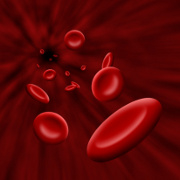Hemophilia: An Overview
 Photo: Getty Images
Photo: Getty Images
Childhood cuts and scrapes are normally nothing more than a rite of passage of childhood. A wet paper towel, a little Neosporin, a Scooby-Doo Band-Aid, a magic kiss from mom and the injury is good as new and the child quickly off to the next adventure -- and scrape.
Unfortunately, normal bumps and bruises aren’t quite so easy for those diagnosed with hemophilia. Normally inherited, hemophilia is a very rare bleeding disorder that renders blood unable to clot normally. As a result, even the smallest of childhood -- or adulthood -- bumps, bruises, and scrapes can be quite serious and may become life-threatening.
Most of us are born with proteins, or clotting factors, that interact with platelets, enabling them to clot together to stop bleeding. If the proteins are absent, or limited, then the platelets are left unable to do their job properly and bleeding -- even from minor cuts and scrapes -- may continue unchecked. In addition to free bleeding from routine cuts and scrapes, those with hemophilia run a greater risk of internal injury and bleed, causing damage to joints and well as internal organs.
The two most common forms of hemophilia are hemophilia A and hemophilia B. About 90 percent of all persons with hemophilia have hemophilia A. Persons with hemophilia A are either missing, or have lower levels than normal, of clotting factor VIII. (8)
Hemophilia A is also known as antihemophilic factor, thromboplastinogen, factor VIII deficiency, and classic hemophilia. Those diagnosed with hemophilia B either have low levels or missing clotting factor IX (9), or autoprothrombin or factor IX deficiency. Although it’s certainly not a present that you want to receive, hemophilia B is sometimes referred to as Christmas disease.
While less common, it’s possible to acquire hemophilia. This occurs when your body creates antibodies that turn against the clotting factors rendering them unable to perform their job.
While women are carriers of the hemophilia gene, it’s uncommon for a woman to actually have inherited hemophilia and most hemophilia patients are men. According to the Mayo Clinic, there are about 17,000 persons with hemophilia in the United States.
Because hemophilia is a bleeding disorder, its symptoms are characterized by abnormal bleeding, either internally or externally. People with hemophilia may experience nosebleeds which are difficult to stop. They may also experience severe bleeding that won’t stop, or stops and then begins again, from cuts which are relatively minor. Even something as minor as losing a first tooth may cause excessive bleeding for those with hemophilia.
Internal bleeding is also an issue for those with hemophilia. Signs of internal bleeding may include large or excessive bruising and blood in urine or stools. In addition, hemophiliacs must be concerned with bleeding in the joints or brain.
There are different types of hemophilia ranging in severity from mild to severe. Most of the people with hemophilia A -- about 70 percent -- have a severe form of the disease. The types of hemophilia are generally categorized as follows:
• Mild – between 5 and 30 percent of normal clotting factor
• Moderate – between 1 and 5 percent of normal clotting factor
• Severe – less than 1 percent of clotting factor
People with more severe cases are often diagnosed in childhood because they are unable to stop bleeding from normal childhood scrapes or cuts.
It’s important to know which type of hemophilia -- type A or B -- that you have because the treatment varies. The most common treatment is to replace the clotting factor. This is done either by injecting clotting factor into the veins or through an IV.
Replacement clotting factors can be made from human blood or may be recombinant clotting factors. Recombinant clotting factors are not made from human blood sources. Persons with severe forms of hemophilia generally require replacement clotting therapy.
Some people with moderate or mild forms of hemophilia may need to replace clotting factors on a preventive or prophylactic basis while other may only require treatment on-demand. It’s possible to develop antibodies that attack the replacement clotting factor or develop viral infections, such as HIV/AIDS or hepatitis, from clotting factors that are made from human blood.
Replacement treatments may be conducted at home which enables quicker access to treatment during an emergency and helps to prevent damage to joints due to blood loss. In addition to replacement clotting therapy, some people with mild or moderate forms of hemophilia A may use a man-made hormone called desmopressin or DDAVP.
If you have hemophilia, there are federally funded hemophilia treatment centers or HTCs which have resources available in one location for those living with hemophilia. For more information on HTC centers near you, or the services they provide, please visit http://www.cdc.gov/ncbddd/hemophilia/HTC.html.
Sources:
What is Hemophilia? National Heart Lung and Blood Institute. 01 Jul 2011. http://www.nhlbi.nih.gov/health/health-topics/topics/hemophilia
Hemophilia. The Mayo Clinic. 31 Aug 2011. http://www.mayoclinic.com/health/hemophilia/DS00218
Hemophilia. The Mayo Clinic. 2011.
http://www.mayoclinic.org/hemophilia
Reviewed November 1, 2011
by Michele Blacksberg RN
Edited by Jody Smith





Add a CommentComments
There are no comments yet. Be the first one and get the conversation started!